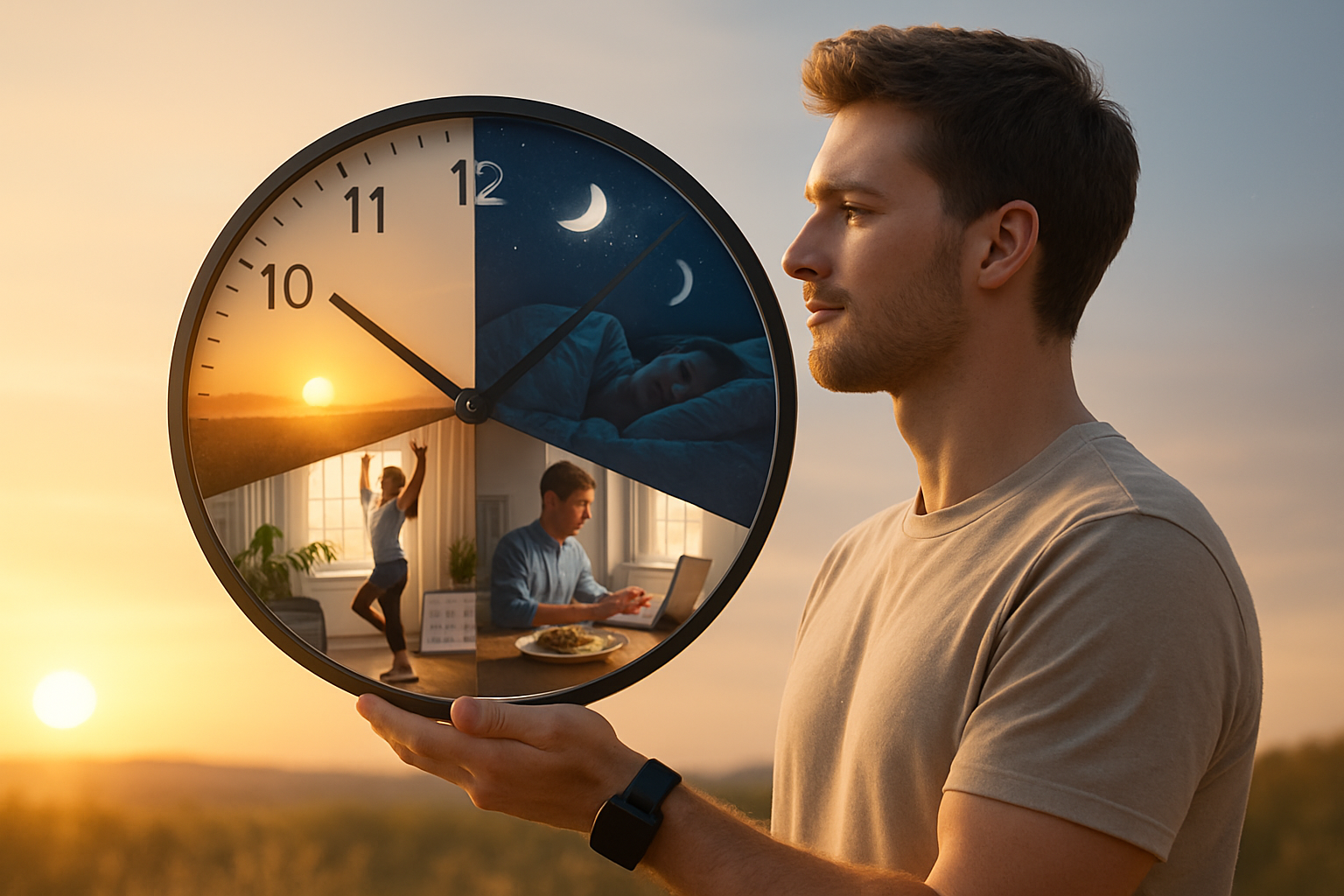Biohacking Your Chronotype: Unlocking Peak Performance Through Circadian Optimization
Imagine waking up each day feeling energized, focused, and ready to conquer the world. Now, picture achieving this without relying on caffeine or alarm clocks. Welcome to the world of chronotype biohacking, where understanding your body's natural rhythms can lead to unprecedented levels of productivity and well-being.

The Science of Chronotypes: More Than Just Early Birds and Night Owls
Chronotypes refer to the natural inclination of our bodies to sleep at certain times and be active at others. While the concept of morning larks and night owls is familiar, recent research has revealed that chronotypes are far more nuanced. In fact, scientists have identified four distinct chronotypes: Bears, Lions, Wolves, and Dolphins.
Each chronotype is characterized by unique patterns of hormone production, body temperature fluctuations, and cognitive performance peaks. Bears, the most common type, tend to follow the solar cycle, while Lions are early risers with peak productivity in the morning. Wolves come alive in the evening, and Dolphins, often associated with insomnia, have irregular sleep patterns.
Understanding your chronotype goes beyond simply knowing when you prefer to sleep. It provides insights into your ideal times for exercise, creative work, analytical tasks, and even eating. By aligning your daily activities with your chronotype, you can optimize your performance and well-being in ways you never thought possible.
Chronotype Assessment: Discovering Your Internal Clock
Identifying your chronotype is the first step towards circadian optimization. While online quizzes can provide a starting point, the most accurate assessment involves tracking your sleep patterns, energy levels, and cognitive performance over several weeks.
Pay attention to when you naturally wake up without an alarm, when you feel most alert, and when you start to wind down. Also, note your appetite patterns and times of peak physical performance. These observations, combined with genetic factors and age-related changes, will help you determine your chronotype.
It’s important to remember that chronotypes can shift over time, especially with age. Regular reassessment ensures you’re always working with your body’s current rhythms, not outdated patterns.
Aligning Your Life with Your Chronotype
Once you’ve identified your chronotype, the next step is to restructure your day to align with your natural rhythms. This process, known as circadian entrainment, can lead to significant improvements in sleep quality, mood, and overall health.
For Bears, this might mean scheduling important meetings and cognitive tasks for late morning to early afternoon. Lions should tackle their most challenging work early in the day, while Wolves might find they’re most creative and productive in the evening hours. Dolphins, with their irregular patterns, benefit from flexible schedules that allow for productivity bursts when they occur.
This alignment extends beyond work schedules. Meal timing, exercise routines, and even social activities can be optimized based on your chronotype. For instance, Bears might benefit from a protein-rich breakfast to kickstart their metabolism, while Wolves might find that late-night snacking aligns better with their natural rhythms.
The Impact of Modern Life on Chronotypes
Our 24/7 society, with its artificial lighting and constant connectivity, has significantly disrupted our natural circadian rhythms. This phenomenon, known as circadian desynchronization, can lead to a host of health issues, including insomnia, metabolic disorders, and even increased cancer risk.
Blue light from screens is a particularly problematic disruptor, suppressing melatonin production and confusing our internal clocks. For optimal chronotype alignment, it’s crucial to limit screen exposure in the hours leading up to bedtime, regardless of your specific type.
Social jet lag, the mismatch between social obligations and our natural sleep patterns, is another common issue. This is particularly challenging for Wolves and Dolphins in traditional 9-to-5 work environments. Flexible work arrangements and understanding employers can make a significant difference in allowing individuals to work with their chronotypes rather than against them.
Biohacking Techniques for Chronotype Optimization
Biohacking your chronotype involves more than just adjusting your schedule. It requires a holistic approach that considers light exposure, nutrition, exercise, and even social interactions.
Light therapy, for instance, can be a powerful tool for resetting your circadian rhythm. Exposure to bright light in the morning can help shift your wake time earlier, while strategic use of blue-blocking glasses in the evening can promote earlier sleep onset.
Nutritional strategies, such as time-restricted feeding aligned with your chronotype, can enhance metabolic health and energy levels. For example, Lions might benefit from an extended overnight fast, while Wolves might find that a later eating window supports their natural rhythms.
Exercise timing is another crucial factor. Morning workouts can help reset the circadian clock for night owls trying to shift earlier, while evening exercise might be more beneficial and enjoyable for natural Wolves.
Chronotype Optimization Quick Tips
-
Track your energy levels throughout the day to identify your natural peaks and troughs
-
Expose yourself to natural sunlight within an hour of waking to reinforce your circadian rhythm
-
Adjust your meal times to align with your chronotype’s metabolic peaks
-
Schedule creative tasks during your chronotype’s peak cognitive performance hours
-
Use blue-light blocking technology in the evening, especially if you’re a Lion or Bear
-
Consider a sunrise alarm clock to wake up more naturally, particularly beneficial for Wolves and Dolphins
-
Practice consistent sleep and wake times, even on weekends, to strengthen your circadian rhythm
-
Experiment with different exercise times to find what feels best for your chronotype
As we continue to unravel the complexities of chronobiology, it’s clear that one-size-fits-all approaches to health and productivity are outdated. By understanding and working with our unique chronotypes, we can unlock new levels of well-being and performance. Remember, the goal isn’t to force yourself into an unnatural rhythm, but to find harmony between your internal clock and the demands of modern life. Embrace your chronotype, and let it guide you towards a more energized, balanced, and fulfilling life.




